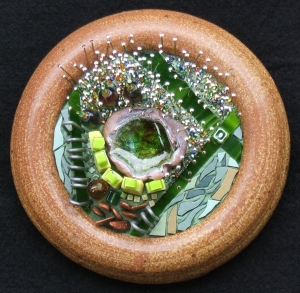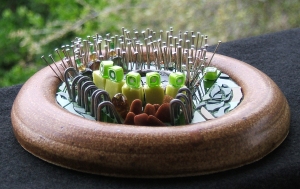Taste and See
The other day my family was discussing with a friend how our brains perceive information coming in from our senses. The senses of sight, sound, and touch seem to be newer products of evolution than the senses of taste and smell, which are linked. Only a few types of receptors are necessary to tell us a huge array of information about the world ‘out there’ for sight, taste, sound, and touch. This is as true for an animal brain as it is for a human brain. Sight is mapped in the neurons of our brains in the same spatial configuration as the outside world at which we are looking. Sound is mapped sequentially in our neurons in the same order as pitches. And, touch is mapped in spatial sequence according to the sequence perceived on our skin by our touch receptors. So far, it is supposed that we perceive only four tastes, but our sense of taste is so dependent on our sense of smell that we perceive taste and smell almost together. Brains use an older system to tell us what we are smelling. It is a system of a vast number of receptors, one for each chemical. The number of separate smells we perceive is numbered at least in the thousands and there is no way to map these in the neurons in any sequential order that corresponds to an outside order. We would laugh at the question, “Does the taste of broccoli come before or after the taste of doughnuts?” Or, “Is egg to the left or right of spaghetti?”
It is almost impossible to accurately describe a smell to a person who has never smelled that particular smell before- anything we say is nonsensical or, at least, inadequate as soon as we say it. That must be why it has become a running joke when describing the flavor of an unfamiliar meat, “It tastes like chicken.” We know it doesn’t- not really- but, what else are we going to say?
Isn’t it interesting that the Hebrew psalmist from so long ago invites us to “taste and see that the Lord is good”? (Psalm 34, verse 8) We are invited to perceive with nothing more than our senses a spirit which is in this world, but not of this world . This leads me to more thought about linking one sense with another for a cross-reference approach to understanding what we are taking in and perceiving about the world, and even out-of-this-world.
Working on the principle that the best I might be able to do is to describe what I detect with one of my senses through the medium of a different sense, I chose as a subject food with a sharp taste, but with other complex flavors under the sharpness- arugula- to try to describe visually. Here is the result; herbal, earthy, and sharp. The last time I used pins in a mosaic, I used them as a reference to ‘waiting on pins and needles’ in my piece “The Gradual Unfolding of Time”. In this latest mosaic I use pins to refer to the bitterness of the herb. I also intentially did not provide a hanger on the back of the mosaic so that it can rest on a tabletop easel in any orientation the viewer would like. There is no up or down, just as there is no up or down to a smell!



Hi Lynn, I like your thoughts and your latest mosaic-you are really thinking “outside the box” with this piece. Your other work is beautiful also.
Thanks, Suzanne, and thanks for visiting.
wow, Lynn! I love this – and I loved the process your brain took through it!! Thanks for sharing all of it 🙂 Great texture, color, shape …. 🙂
Hi, Helen. Thanks for your encouragement! There is more to come with my mom’s ceramic inclusions.